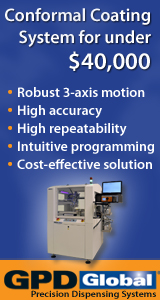Printed Circuit Board Assembly & PCB Design Forum
SMT electronics assembly manufacturing forum.
- SMTnet
- »
- Electronics Forum
- »
- Reliability of Reworked BGAs/CSPs
Reliability of Reworked BGAs/CSPs
![]()
![]() I'd like to find some technical papers on the reliability ...
- Feb 03, 1999
by
I'd like to find some technical papers on the reliability ...
- Feb 03, 1999
by
![]()
![]() | I'd like to find some technical papers on the reliabilit...
- Feb 03, 1999
by
| I'd like to find some technical papers on the reliabilit...
- Feb 03, 1999
by
![]()
![]() | I'd like to find some technical papers on the reliabilit...
- Feb 03, 1999
by
| I'd like to find some technical papers on the reliabilit...
- Feb 03, 1999
by
![]()
![]() | I'd like to find some technical papers on the reliabilit...
- Feb 03, 1999
by
| I'd like to find some technical papers on the reliabilit...
- Feb 03, 1999
by
![]()
![]() | I'd like to find some technical papers on the reliabilit...
- Feb 04, 1999
by
| I'd like to find some technical papers on the reliabilit...
- Feb 04, 1999
by
![]()
![]() Actually, solder paste adds about 12% to the joint volume ...
- Feb 04, 1999
by
Actually, solder paste adds about 12% to the joint volume ...
- Feb 04, 1999
by
![]()
![]() | Actually, solder paste adds about 12% to the joint volum...
- Feb 04, 1999
by
| Actually, solder paste adds about 12% to the joint volum...
- Feb 04, 1999
by
- SMTnet
- »
- Electronics Forum
- »
- Reliability of Reworked BGAs/CSPs







